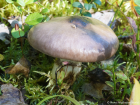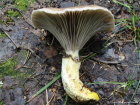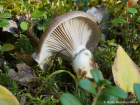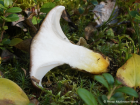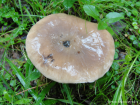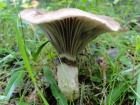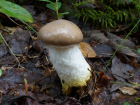Cap grey-brown, convex or bun-shaped, becoming expanded and flattened, heavily viscid when damp, becoming shiny when dry. Flesh dirty white, moderate, and firm. Gills at first whitish, becoming tinged olivaceous-grey when mature, deeply decurrent, thick. Stem dirty white, more or less equal, lemon yellow at the base. The ring is white, glutinous, and zone-like. Spore print dark sepia-brown.
Microscopic Features: The spores are subfusiform, smooth, measuring 17-20 x 5.5-7 μm.
Gomphidius glutinosus on the MushroomExpert.Com Web site.
Gomphidius glutinosus on the www.first-nature.com web site.
Gomphidius glutinosus on the mykoweb.com web site.
Many mushrooms are poisonous, and some can be lethally toxic. Distinguishing between edible and poisonous mushrooms can be very challenging. Therefore, we strongly advise against consuming wild mushrooms. This website does not contain any information about the edibility or toxicity of mushrooms.
Although efforts have been made to ensure accuracy on this website, the information may contain errors and omissions. Therefore, all content provided is for educational and informational purposes only and should not be relied upon or used as a basis for consuming any plants or mushrooms.
External links are provided for reference only. We do not endorse or take responsibility for the content, advice, or products found on these sites or in any advertisements shown on this website.
